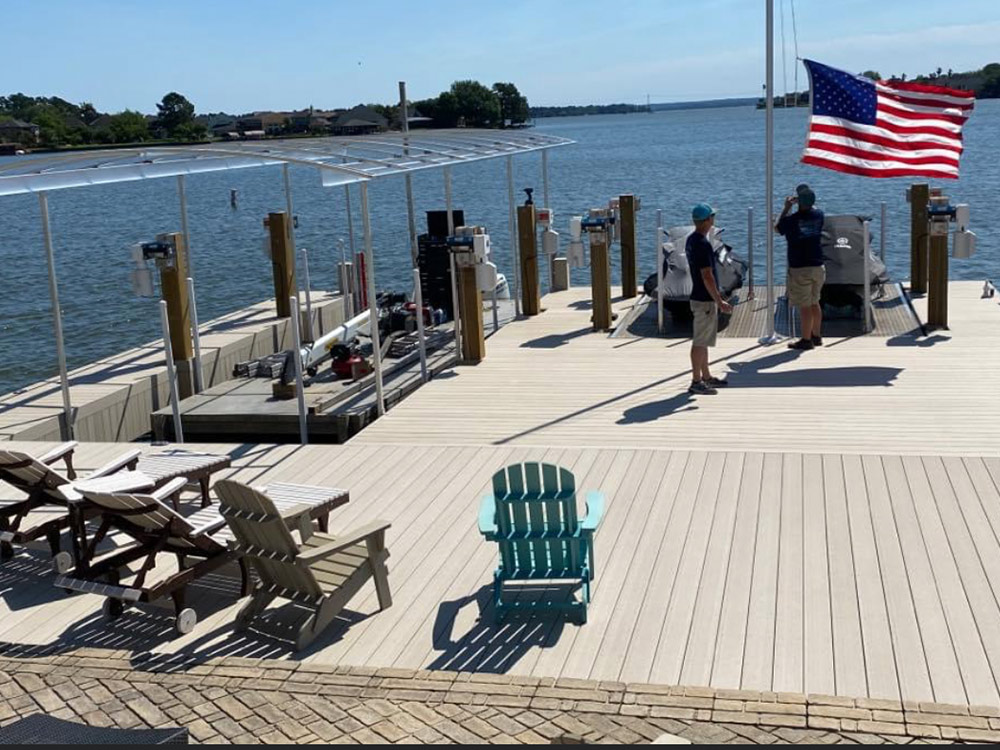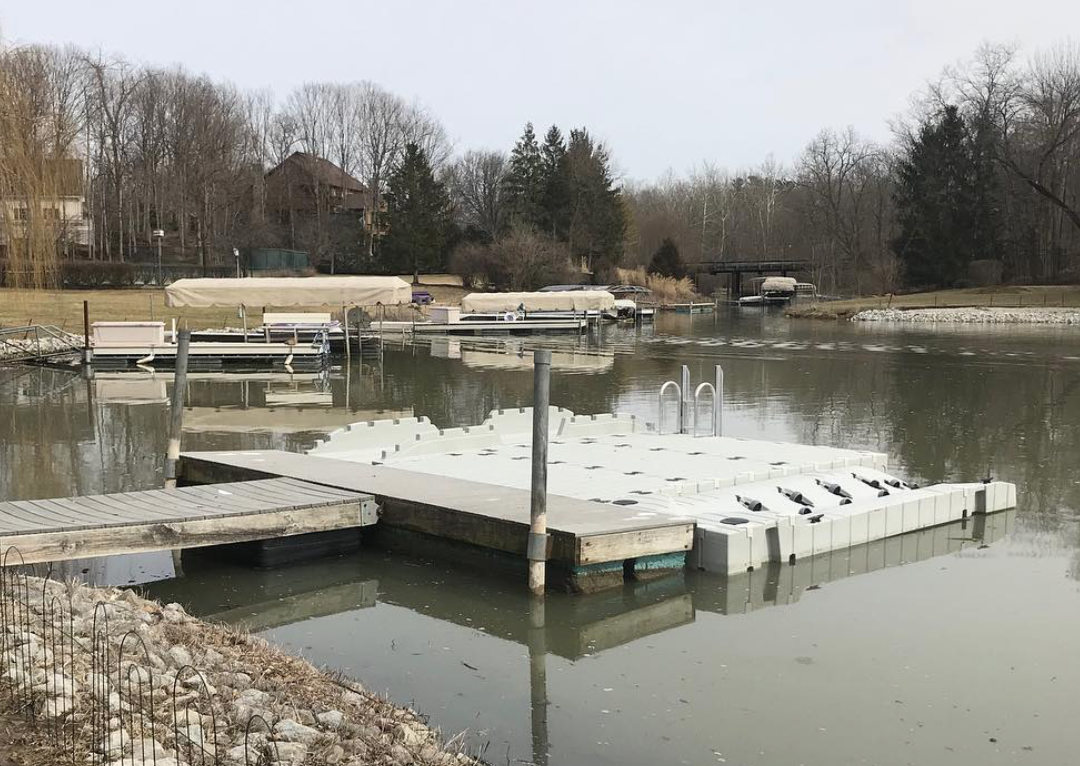Reliable Dock Repair Techniques: Guaranteeing Structural Honesty
Ensuring the structural honesty of docks with efficient repair techniques is vital for the durability and security of marine centers. Consequently, selecting the best repair work materials, such as corrosion-resistant alloys and composite materials, is vital for toughness.
Assessing Dock Damages
Examining dock damage is a crucial primary step in making sure the architectural honesty and safety of any type of docking facility. This first analysis involves a thorough assessment to recognize both noticeable and surprise problems. Trick facets to examine consist of the dock's structure, pilings, decking, and hardware. Each part needs to be looked at for signs of wear, rot, rust, or other forms of deterioration that can jeopardize the structural honesty.
Architectural designers or certified inspectors usually carry out these analyses using specialized tools and methods. For instance, underwater assessments may use sonar equipment or from another location ran lorries (ROVs) to identify submerged damages. Above water, aesthetic examinations are matched by utilizing dampness meters and various other analysis tools to discover underlying concerns not right away visible to the nude eye.

Picking Repair Work Products
Selecting the suitable fixing materials is a crucial step in the dock reconstruction procedure, one that straight influences the longevity and efficiency of the fixed framework. Product choice must be driven by aspects such as environmental problems, load-bearing needs, and compatibility with existing dock elements.
Along with timber, composite materials are significantly preferred as a result of their longevity and low upkeep demands. Composites, typically made from a blend of plastic and timber fibers, supply superb resistance to rot, bugs, and UV damages. For steel anchors, choosing corrosion-resistant alloys such as galvanized steel or marine-grade light weight aluminum is vital to prevent rust and make sure structural integrity in saline water conditions.
Epoxy materials and marine-grade sealants are vital for repairing fractures and sealing joints, giving a water resistant obstacle and improving the dock's general strength. By thoroughly picking high-quality products, dock repair work can accomplish durable outcomes, thus securing against future degradation and making sure secure, dependable usage.
Structural Reinforcement Methods
Efficient structural reinforcement methods are crucial in making sure the security and long life of dock fixings. One fundamental technique entails the usage of steel or composite support bars (rebar) within concrete frameworks. Rebar provides additional tensile strength, preventing splits and dispersing lots a lot more uniformly. This method is particularly effective for docks subjected to heavy loads or rough ecological conditions.
Another vital method is the application of fiber-reinforced polymers (FRP) These products supply high strength-to-weight proportions and exceptional resistance to corrosion, making them optimal for enhancing wooden or concrete anchors. FRP can be used in strips or sheets and bonded with epoxy materials to enhance structural stability.
Supporting and securing systems likewise play a critical duty in structural reinforcement. Cross-bracing, making use of metal or wooden light beams, can counteract lateral forces, reducing guiding and motion. Securing systems, such as helical piers or driven heaps, supply a secure structure by moving lots to deeper, extra steady dirt layers.
Last but not least, the assimilation of load-distribution plates can assist disperse weight a lot more equally throughout the dock's surface area, alleviating localized stress and anxiety factors. These strategies jointly make sure that anchors stay robust and risk-free, with the ability of holding up against the rigors of their functional setting.
Advanced Repair Service Techniques

One more advanced technique entails undersea welding, which enables repairs to be conducted without the need to dewater the location. look at here now This method is specifically beneficial for addressing architectural problems in immersed dock components, making certain marginal interruption to procedures. Enhanced welding methods, paired with robotic systems, provide precision and dependability, therefore prolonging the life expectancy of the dock.
In addition, cathodic defense systems are implemented to prevent corrosion in metallic dock structures. By utilizing sacrificial anodes or pleased current systems, these methods efficiently alleviate the electrochemical processes that lead to material damage.
Last but not least, progressed monitoring modern technologies, such as structural health and wellness tracking (SHM) systems, supply real-time information on the problem of dock frameworks. These systems allow positive upkeep and prompt interventions, eventually ensuring the long-term architectural stability of the dock.
Upkeep and Prevention
Upkeep and prevention are basic ideas that underpin the durability and safety and security of dock frameworks. Regular go now evaluations are vital, enabling for very early discovery of deterioration, prospective weak points, and ecological impacts. An aggressive method, entailing routine checks for rust, rot, and structural shifts, mitigates expensive repair work and extends the dock's functional life.
Safety nets should include using protective finishings to steel elements to safeguard against corrosion and utilizing treated timber to withstand degeneration. In addition, making certain appropriate drain and ventilation can prevent water build-up, which is a typical source of architectural deterioration. Including top quality products and sticking to maker guidelines during building and construction and repair work stages additionally play crucial roles in improving sturdiness.

Educating employees in dock upkeep best techniques makes sure consistent application of safety nets. Leveraging technical advances, such as drones for examinations and sensors for real-time surveillance, can better enhance maintenance initiatives. By focusing on upkeep and avoidance, dock proprietors can make sure structural stability, operational security, and affordable monitoring over the dock's life expectancy.
Conclusion
In final thought, maintaining the architectural integrity of marine facilities requires thorough dock repair work methods. Advanced repair work strategies, combined with normal upkeep techniques, guarantee the dock continues to be operational and secure under varied environmental conditions.
Ensuring the structural integrity of docks through effective repair service methods is paramount for the durability and safety and security of marine centers.Picking the ideal repair work products is a crucial action in the dock remediation procedure, one that directly influences the durability and efficiency of the fixed framework.Reliable structural support techniques are important in making sure the security and long life of dock repair work. By focusing on maintenance and prevention, dock owners can guarantee architectural honesty, operational safety and security, and cost-efficient administration over the dock's life expectancy.
In conclusion, preserving the structural honesty of marine centers requires comprehensive dock repair techniques.